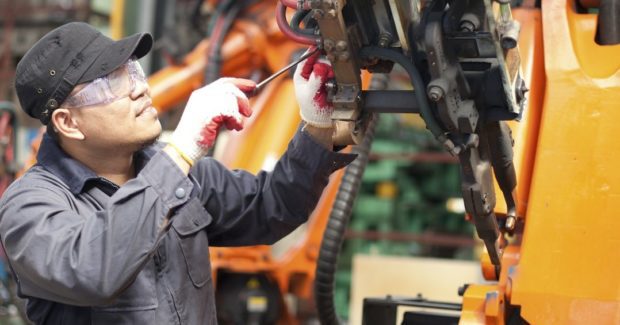Rethinking Automation: The Birth of Circular Manufacturing
Aluminum car body parts made from old cars. Laptops made of plastic from old laptops. Chemicals leased out, recovered, and leased again. Don’t miss the new business opportunities for manufacturers that lie hidden inside the circular economics being created by connecting automation with the technology of the Internet of Things.
Posted: May 6, 2016
BY RON VAN DEN HEUVEL
Circular economics is fast becoming more mainstream as ever greater numbers of companies realize there are profits to be made from this new, more sustainable way of doing business. Some manufacturers feared that second or third life product streams would cannibalize their regular, new product lines. But our research suggests this is not the case. Instead, second or third life product streams tend to provide goods for a different set of customers as the business case for the circular model goes global. Having gained ground in Europe, the interest in circular economics is now spreading across the world, including the U.S., where one reporter has captured the mood: “Laptops made of plastic from old laptops. Aluminum car body parts made from old cars. Chemicals leased out, recovered, and leased again. These are just a few examples of how the circular economy – once seen as a Scandinavian specialty – is starting to spin in the United States.”1
The circular economy is a regenerative environment where manufacturers find ways to use materials and goods for much longer by creating more than one product lifecycle. This kind of innovation goes to the heart of what it means to be human: generating wealth and success but in the context of respect for the planet, supporting its survival for future generations. Manufacturing is really the heart of this new revolution, which represents one of the greatest innovative challenges of our times. To achieve sustainable returns by recovering used assets, manufacturers must explore the processes underpinning this change to the circular model.
Three important pillars support circular manufacturing: the service-based model, the use of asset-tracking technology to monitor assets, and well-organized take back and refurbishment systems. Pioneering manufacturers that are already going down this path have discovered how these can generate new revenue streams. They also recognize how, in the long run, this can be a total game changer from the point of view of people, planet and profits.
THE SERVICE-BASED MODEL
In the past, manufacturers have sold assets to customers. This logic seemed to make most sense. But in a world of economic trends to minimize waste, it is far better for the producers to retain ownership and sell a service to the customer instead. For customers, this tends to mean they get a better service overall, with maintenance and quality being the value gained from their investment. For example, they get the scanning service rather than the MRI machine itself. In return, the MRI manufacturer provides the service and maintenance of the machine to ensure top performance and factory condition prior to its next cycle.
THE USE OF ASSET-TRACKING TECHNOLOGY TO MONITOR ASSETS
In this second pillar, also known as the Internet of Things (IoT), monitoring is being brought into reality by the new technology wave of chips and sensors that monitor and analyze events and conditions, provide feedback information and enable machines to talk to machines. Some manufacturers predict that 50 billion devices will be connected in IoT – an enormous opportunity with new capabilities that are driving revolutionary change among manufacturers, many of whom are already adopting its use to optimize their production processes and improve their customer service. For example, experts in electronics and textiles are exploring the implications of new technology for asset tracking through the use of radio frequency identification (RFID) “as a way of capturing and passing on information throughout a product’s life,” capturing information for the next stages of reuse and recycling.2
Indeed, there is big money in monetizing waste through the circular economy being fueled by the use of digital technologies. “Harnessing data allows companies to put a value on waste in all its forms and monetize that waste through products and services that delight customers and generate significant new revenue growth. By 2050, we think as much as $25 trillion could be up for grabs,” notes Peter Lacy, the managing director of Accenture.3
Manufacturers are increasingly seizing these new opportunities offered by IoT and, in some cases, shifting to a more service-based model in the process. A recent report titled “Internet of Things” from Tata Consulting Services (TCS; Troy, MI) found that 79 percent of companies are using Internet-connected technologies to track their customers, products, the premises in which they do business with customers or their supply chains. Of all the sectors using this new technology, manufacturers – dubbed the “rock stars of IoT” – claimed the biggest income boost from applying it, averaging a 28.5 percent revenue increase.4
This same report also found that 15.4 percent of companies using IoT technology were shifting to the ‘product-as-a-service’ model based on greater leasing of their products. They predicted this would climb to 19 percent by 2020. For example, Sysmex America Inc. (Lincolnshire, IL) has already moved from selling its blood analyzing equipment to selling a service instead. Its customers are paid a set amount by an insurance company to do a blood test. The expense side of the equation is unpredictable for the labs: their equipment might break or the U.S. Food and Drug Administration may add requirements. But using the service model, Sysmex has eliminated that uncertainty. They take care of their maintenance and equipment while the lab pays them a set fee for each reportable result to insurers.
THE USE OF ASSET-TRACKING TECHNOLOGY TO MONITOR ASSETS
This third pillar is all about developing processes and systems connected to taking back and refurbishing goods for a second life cycle. Tracking technology can revolutionize a manufacturer’s ability to do this. It requires a thorough, sequential understanding of all the material flows of their products in order to plan and facilitate the next cycle.
All three of these pillars are driving great innovation that is creating a circular economy for manufacturers. Don’t miss the new business opportunities that lie hidden inside the circular economics of connecting automation with the technology of the Internet of Things.
Notes
1 http://www.theguardian.com/sustainable-business/2015/aug/26/how-the-circular-economy-is-taking-off-in-the-us
2 http://www.greatrecovery.org.uk/resources/tracking-tracing-materials-in-the-circular-economy/
3 https://agenda.weforum.org/2015/08/why-the-circular-economy-is-a-digital-revolution/
4 Tata Consulting Services, Internet of Things: The Complete Reimaginative Force, TCS Global Trend Study, July 2015.










